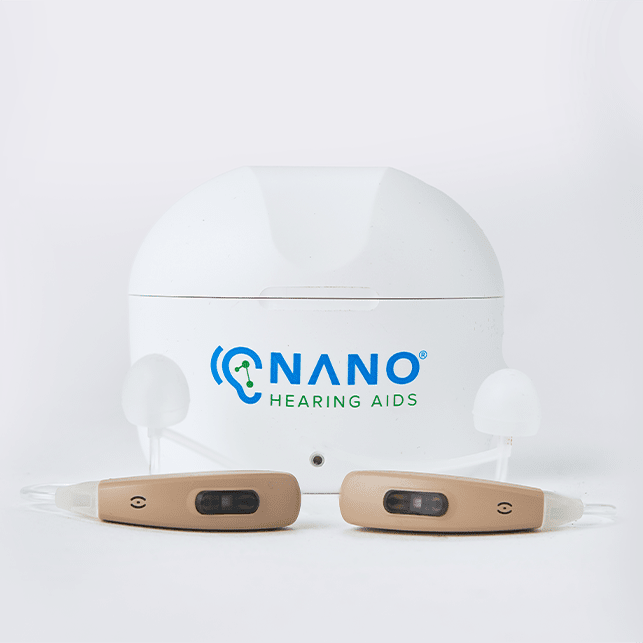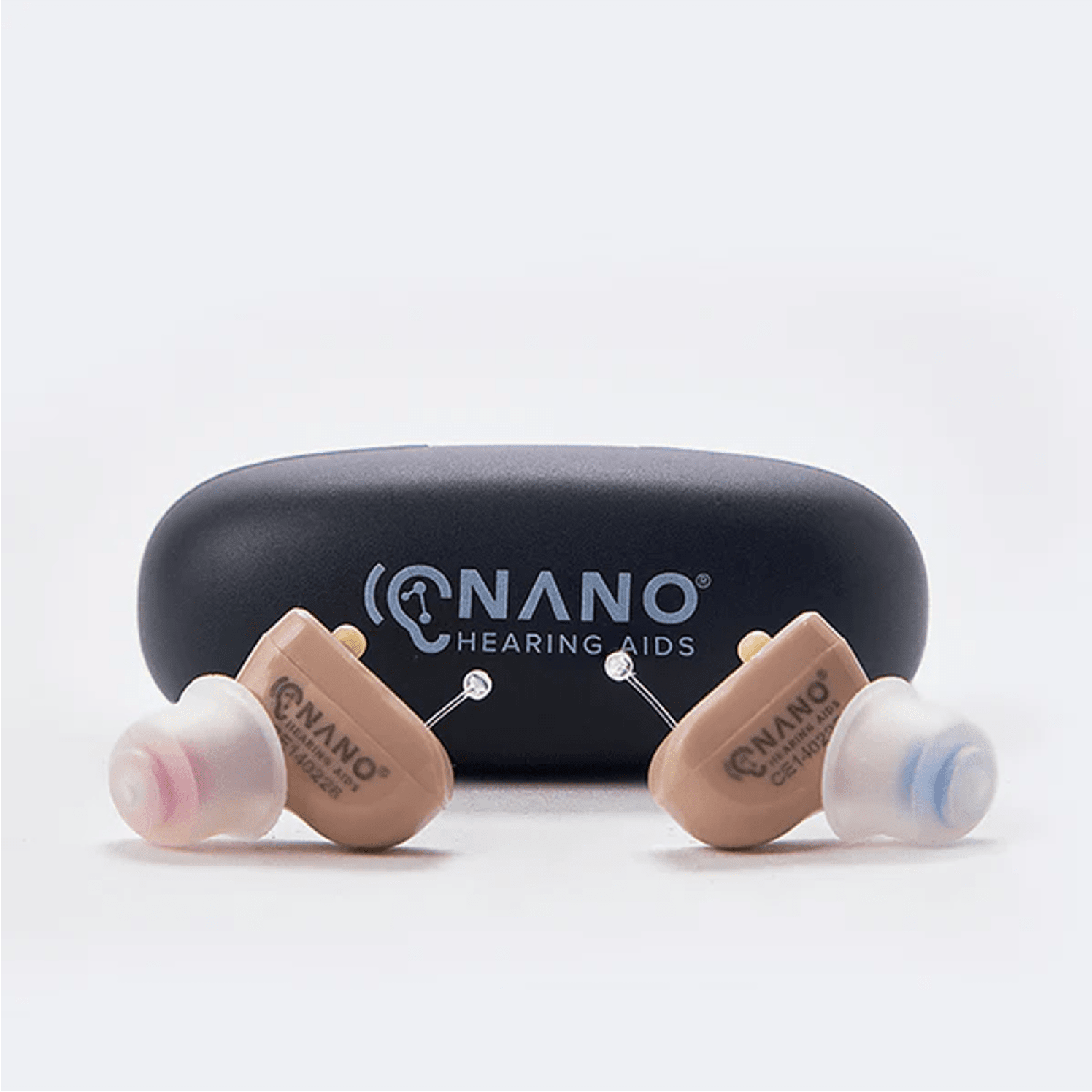Key Takeaways
- High-frequency hearing loss affects the ability to hear high-pitched sounds, like children’s voices and certain consonants, often impacting clarity of speech.
- Devices like the Phonak Paradise, Starkey Livio AI, Widex Moment, and Nano models offer advanced sound processing, noise reduction, and feedback cancellation to enhance high-frequency sound clarity.
- Starting at just $487, Nano Audacity® RIC provides customizable sound profiles, feedback management, and 17-hour rechargeable battery life - making it an excellent budget-friendly choice for high-frequency hearing loss.
What is High-Frequency Hearing Loss?
High-frequency hearing loss is a type of sensorineural hearing loss that makes it difficult to hear high-pitched sounds, like children’s or women’s voices, birds chirping, or beeping devices.
Common in older adults, it affects speech clarity and understanding, making consonants like "f," "h," and "s" sound muffled, especially on the phone or TV.
If someone cannot hear sounds between 2 kHz- 8 kHz, it can be said they suffer from high-frequency hearing loss (image courtesy of Healthy Hearing).
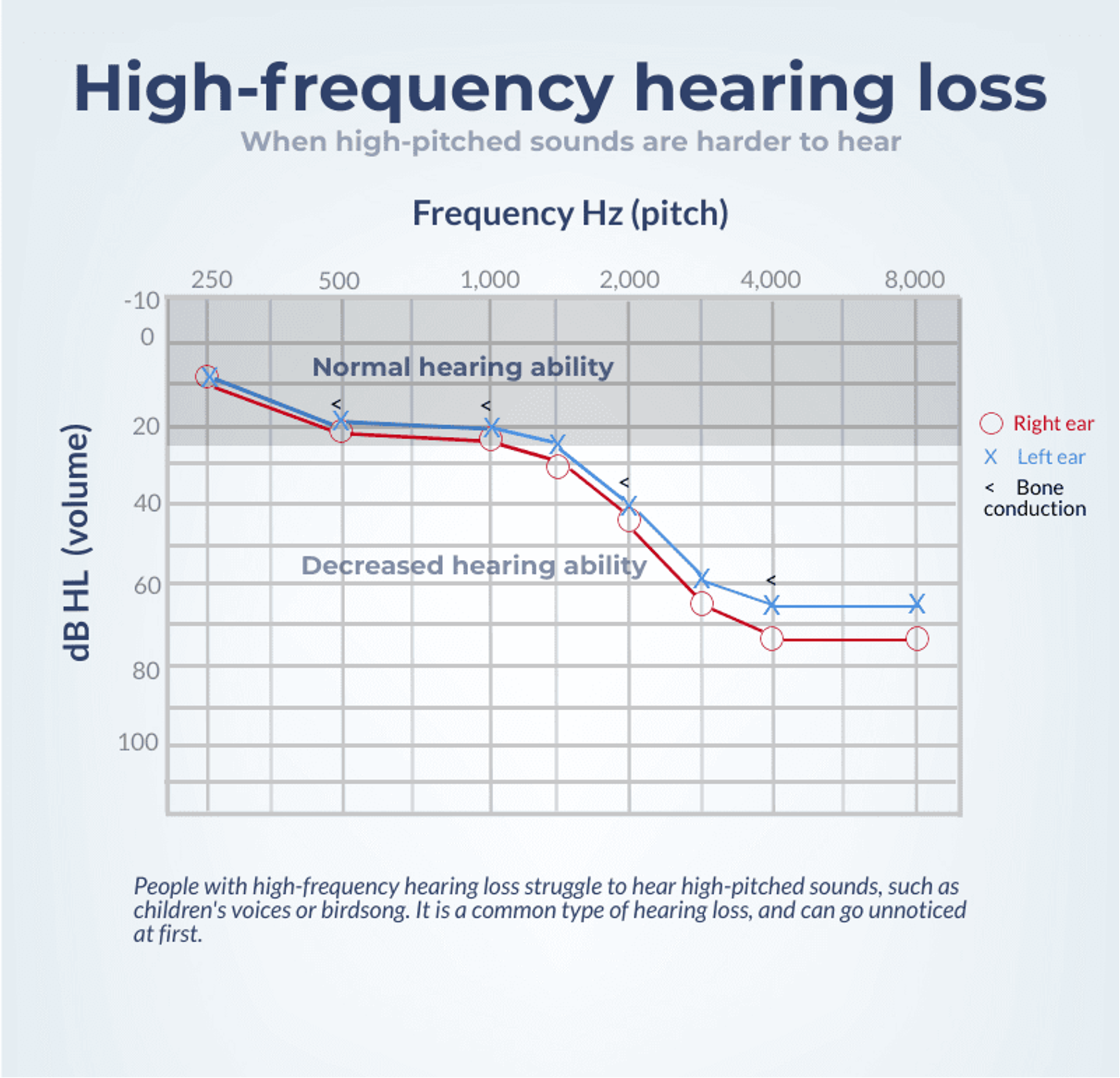
If someone has this type of hearing loss at a very young age, it can affect their communication, learning, and confidence. It can also lower quality of life for older people, so an early diagnosis and the right hearing aids can help manage this condition effectively.
Now, let’s learn about the 5 best hearing aids for high-frequency hearing loss.
Nano Hearing Aids are FDA-registered, Class I devices. These OTC hearing aids are designed for individuals over 18 years of age with perceived mild to moderate hearing impairment. Nano won the Top ENT Solution Provider 2023, has 24/7 customer care, and has an affordable price compared to others.
The 5 Best Hearing Aids for High-Frequency Hearing Loss
1. Phonak Paradise
Audiologists love the Phonak Paradise hearing aid since it features great hearing technology, such as Speech Enhancer.
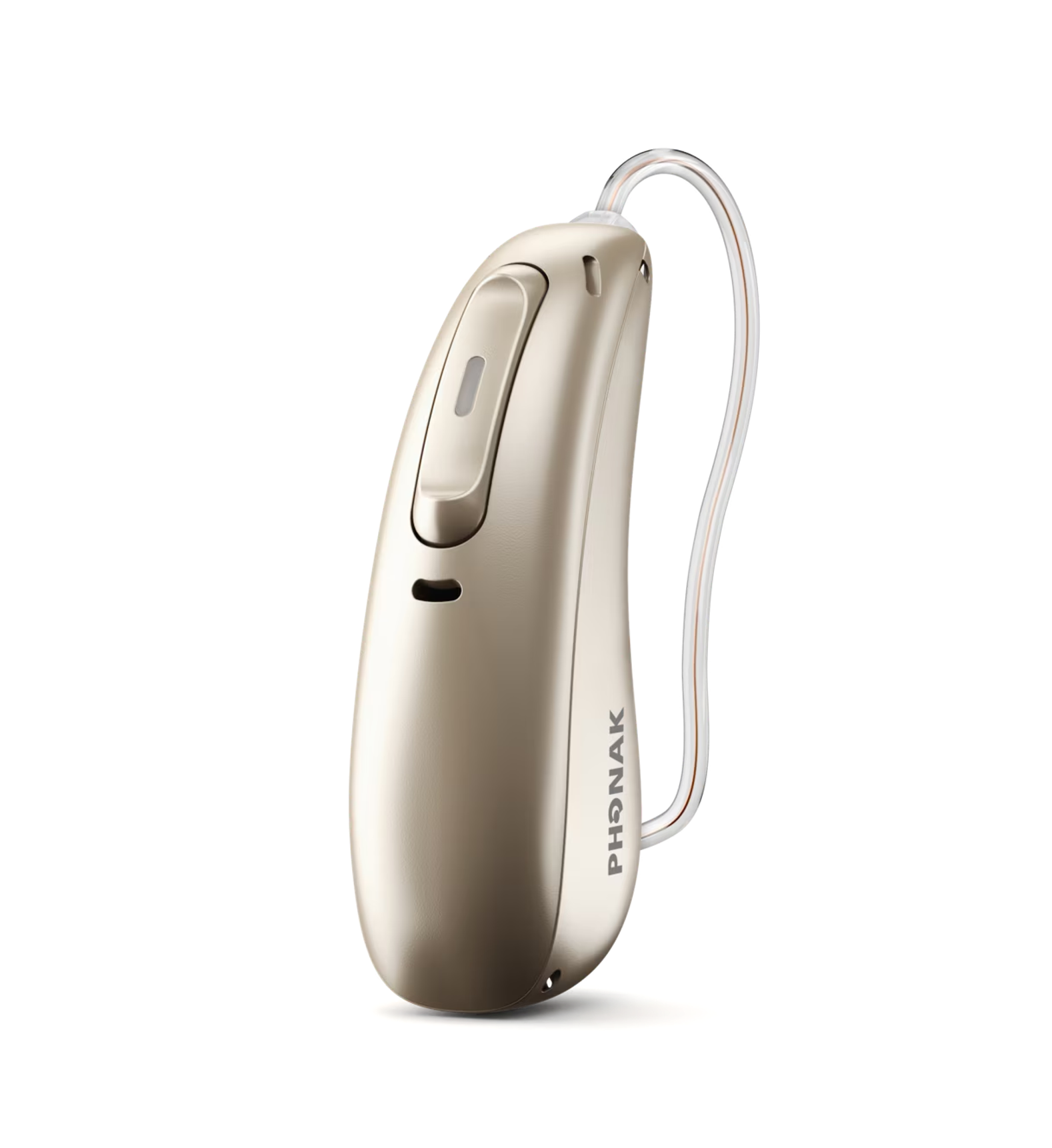
The Phonak Paradise helps you understand someone who's speaking softly or speaking from a distance in a quiet environment, and this model also has rechargeable batteries, Bluetooth connectivity, and great adjustment options. The AI-powered AutoSense technology automatically adjusts settings based on the listening environment around you, making up to 200 adjustments as necessary, which should help you hear high-frequency sounds easily.
It features Phonak’s AutoSense technology, with which this hearing aid will automatically sense the sound environment around you and adjust the settings accordingly. Most importantly, it will help you hear high-frequency sounds easily by adjusting its settings to match the surrounding ambiance.
Pros
- High-performance hearing technology
- AutoSense adjustment technology
- Rechargeable battery
- Bluetooth connectivity
- 3-years warranty
- Waterproof, sweatproof (Audéo Life model only)
Cons
- It can be too big for many, potentially causing discomfort
This Nano Audacity® receiver-in-canal (RIC) hearing aid has rechargeable batteries that will work for up to 17 hours per charge.
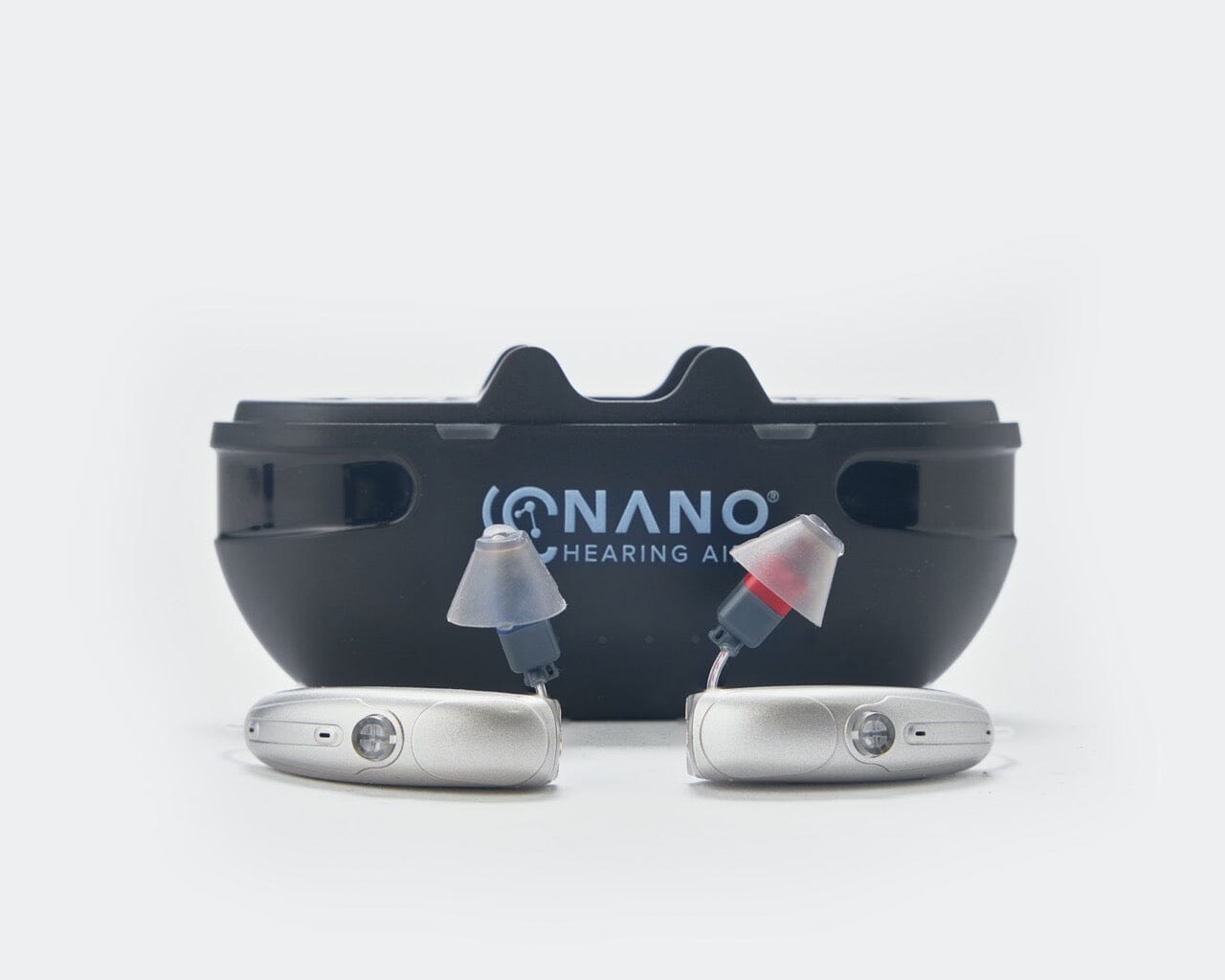
With three program settings for the Nano Audacity® RIC, you can adjust sound profiles to fit the environment you’re in.
This hearing aid also features feedback management and background noise reduction - it can help you easily with high-frequency hearing loss by lowering certain frequencies.
All our Nano devices are FDA-registered and can be bought online without a prior hearing test or audiologist’s consultation. They also come with a 45-days money-back guarantee and an option to include a flexible Elite Protection Plan.
Pros
- Noise reduction technology for better sound clarity
- Feedback cancellation
- Rechargeable with 17 hours of use
- Designed to fit ear canals perfectly with various dome sizes
- Can be controlled using Nano Audacity® App
Cons
Only get three hours of Bluetooth streaming for music or phone calls
3. Starkey Livio AI
With the Starkey Livio AI, you’ll get a hearing aid and health tracker in one device - also known as a healthable hearing aid.
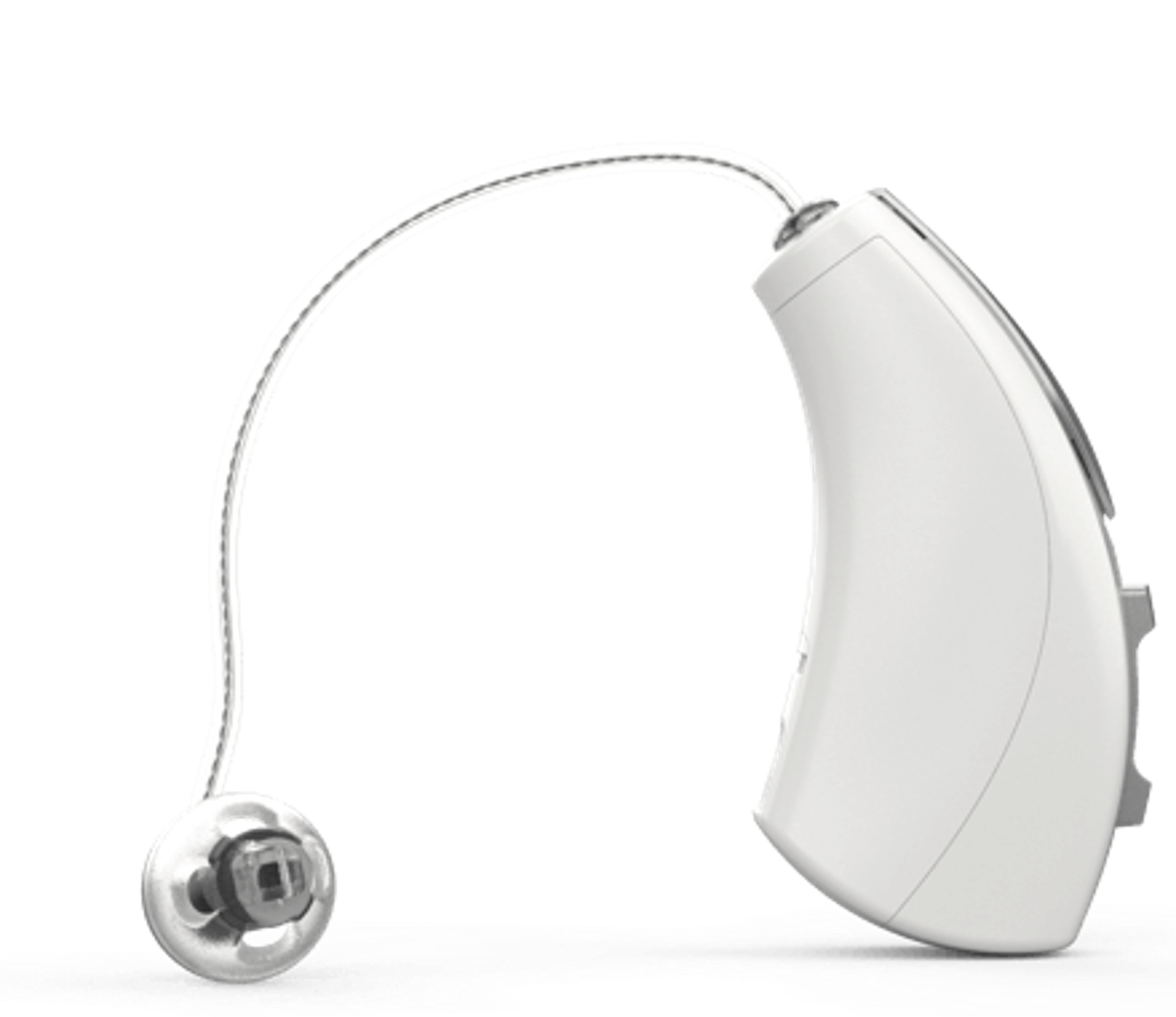
The Starkey Livio AI hearing aid has a rechargeable battery and battery-powered options. You can also use the Bluetooth connectivity function and Thrive app to adjust the device easily based on your needs.
As the name suggests, this device is AI-powered with the following features:
- Thrive Assistant is like a voice-controlled interface, answering questions and providing guidance about hearing aids and usage, enhancing convenience and ease of use.
- Edge Mode uses AI to analyze the sound environment and boost speech clarity in crowded or noisy settings. You can easily activate it with a double tap on the hearing aid.
Pros
- AI-powered
- Thrive app support
- Remote adjustment options
- Health tracker
- 3-year manufacturer’s warranty
Cons
- Amplifying technology on this model is not so great compared to competitors
4. Widex Moment
The Widex Moment features Widex Zen Technology that is proven to be greatly helpful with tinnitus.
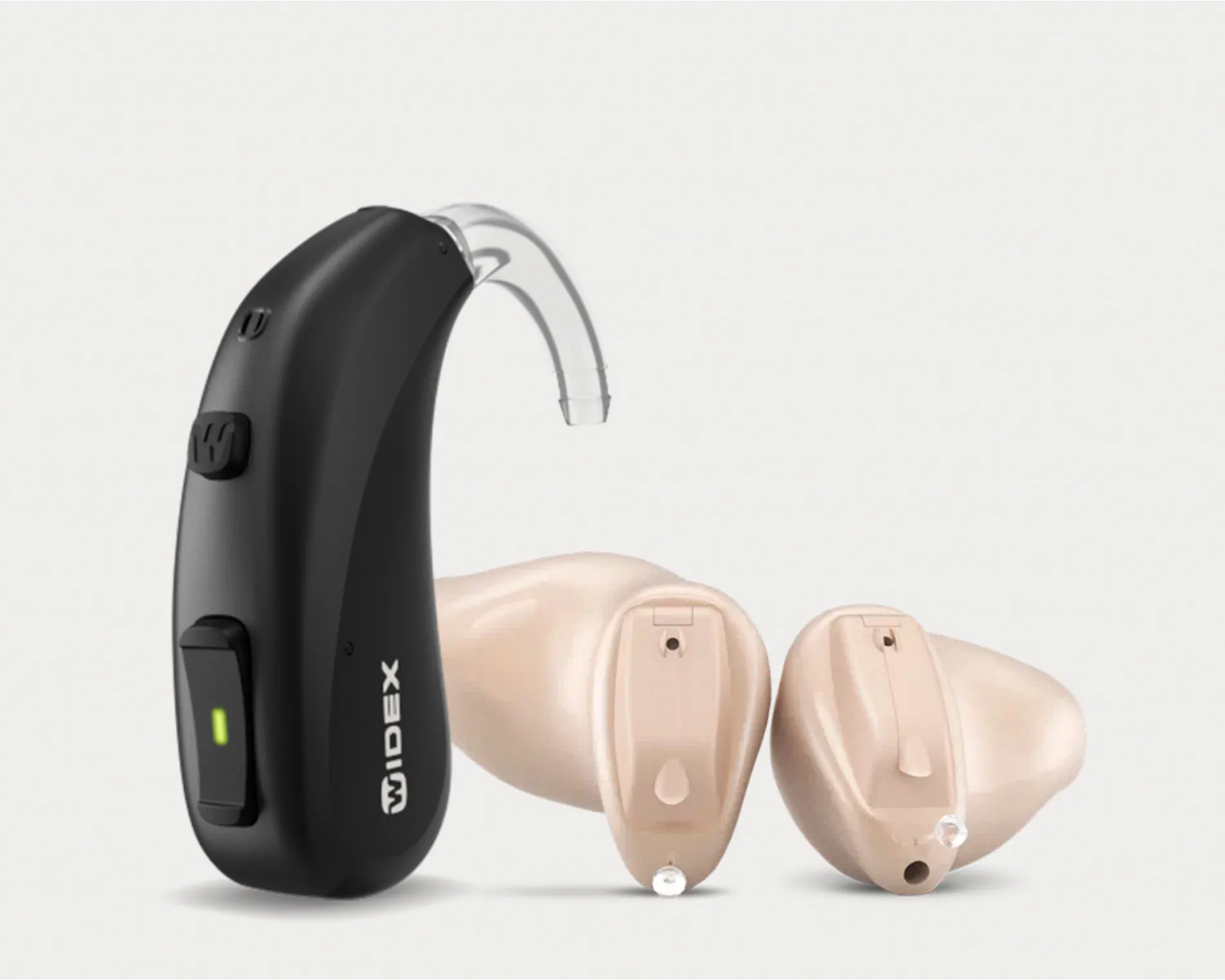
In addition to helping relieve symptoms of tinnitus, the Widex Moment hearing aid features PureSound Technology and True Acoustics technology to help you hear a lot better. PureSound Tech will process the sound a lot quicker than other hearing aids, and so you’ll be able to listen to the sounds in real-time and without any delay.
The sound remains clear and natural, with high-frequency sounds processed effortlessly, allowing seniors and those with high-frequency hearing loss to hear them without difficulty.
Pros
- Widex Zen technology
- PureSound technology
- TruAcoustics technology
- Comfortable
- Natural and distortion-free sound
Cons
- No proper adjusting options
Nano First Ear Pro BTE is our other high-quality hearing aid that starts at only $497.
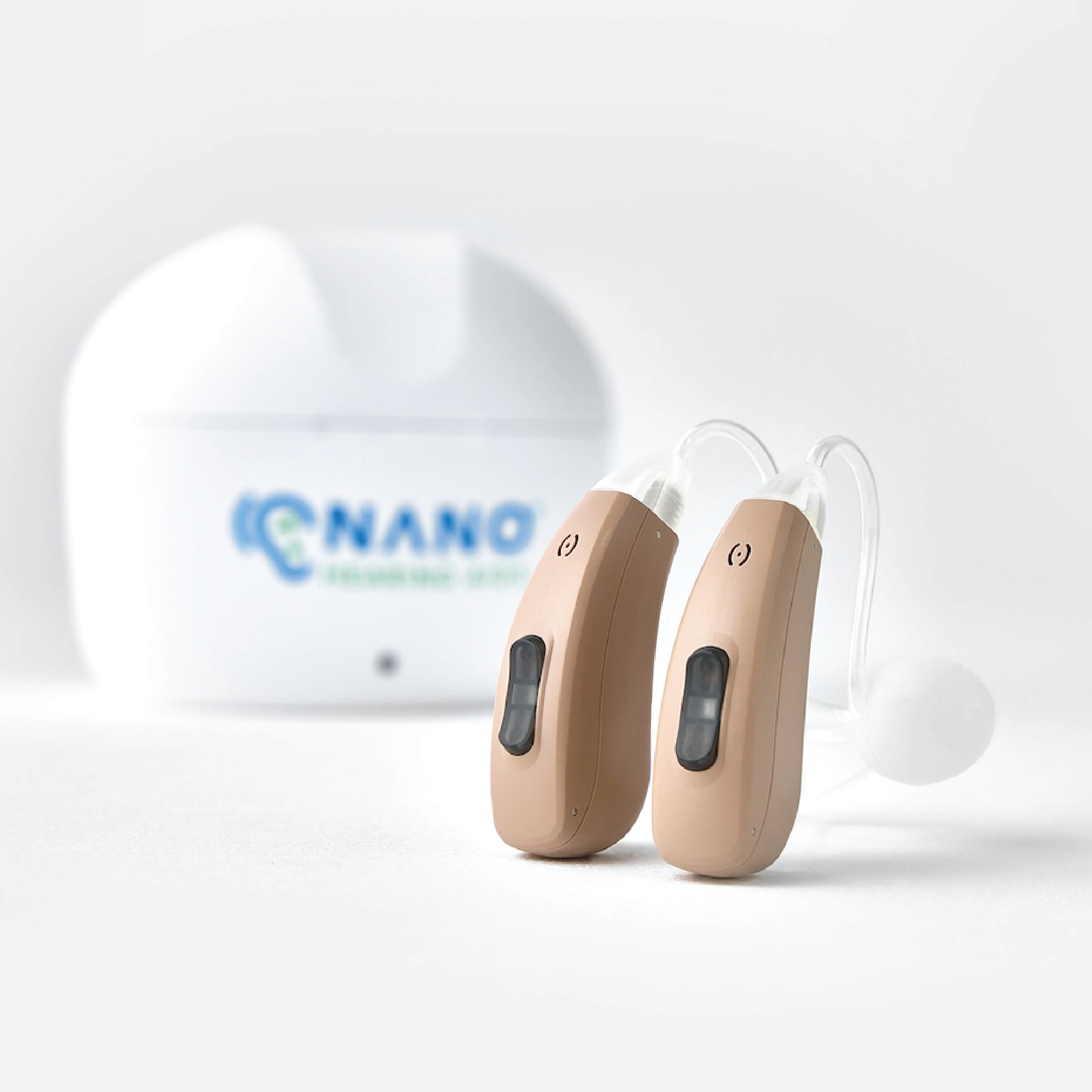
The Nano First Ear Pro BTE comes with all the same perks as the Nano Audacity® RIC described earlier - which makes it a great option if you have high-frequency hearing loss. Unlike our RIC model, this one has a 20 hour battery life, and since it’s a behind-the-ear (BTE) model, people with dexterity issues might be able to handle it better.
Pros
- Feedback cancellation
- Noise reduction technology for better sound clarity
- Rechargeable with 20 hours of use
- Comes with various dome sizes
Cons
- No app control
Frequently Asked Questions (FAQ)
What is high-frequency hearing loss?
High-frequency hearing loss is a type of sensorineural hearing loss that impairs your ability to hear high-pitched sounds, often caused by aging, exposure to loud noise, or medical conditions. It occurs due to damage to the sensory hair cells in the inner ear.
What features should I look for in hearing aids for high-frequency loss?
Look for devices with feedback cancellation, noise reduction, advanced sound processing, and customizable sound profiles. These features ensure high-frequency sounds are amplified and clear.sounds to lower frequencies, making them more audible without just amplifying all sounds.
Can I buy Nano Hearing Aids without a hearing test?
Yes, Nano Hearing Aids are FDA-registered, OTC devices that can be purchased online without a hearing test or audiologist consultation, offering convenience and affordability.

